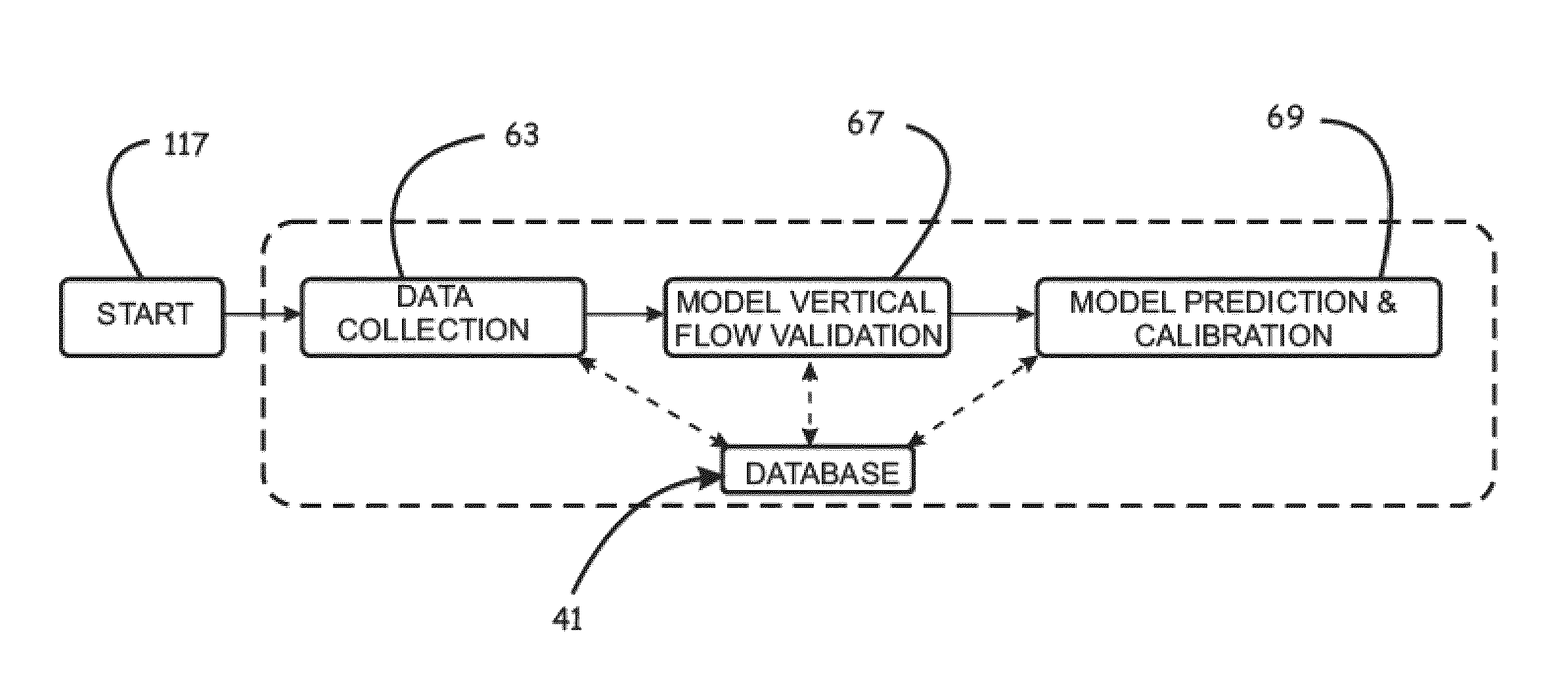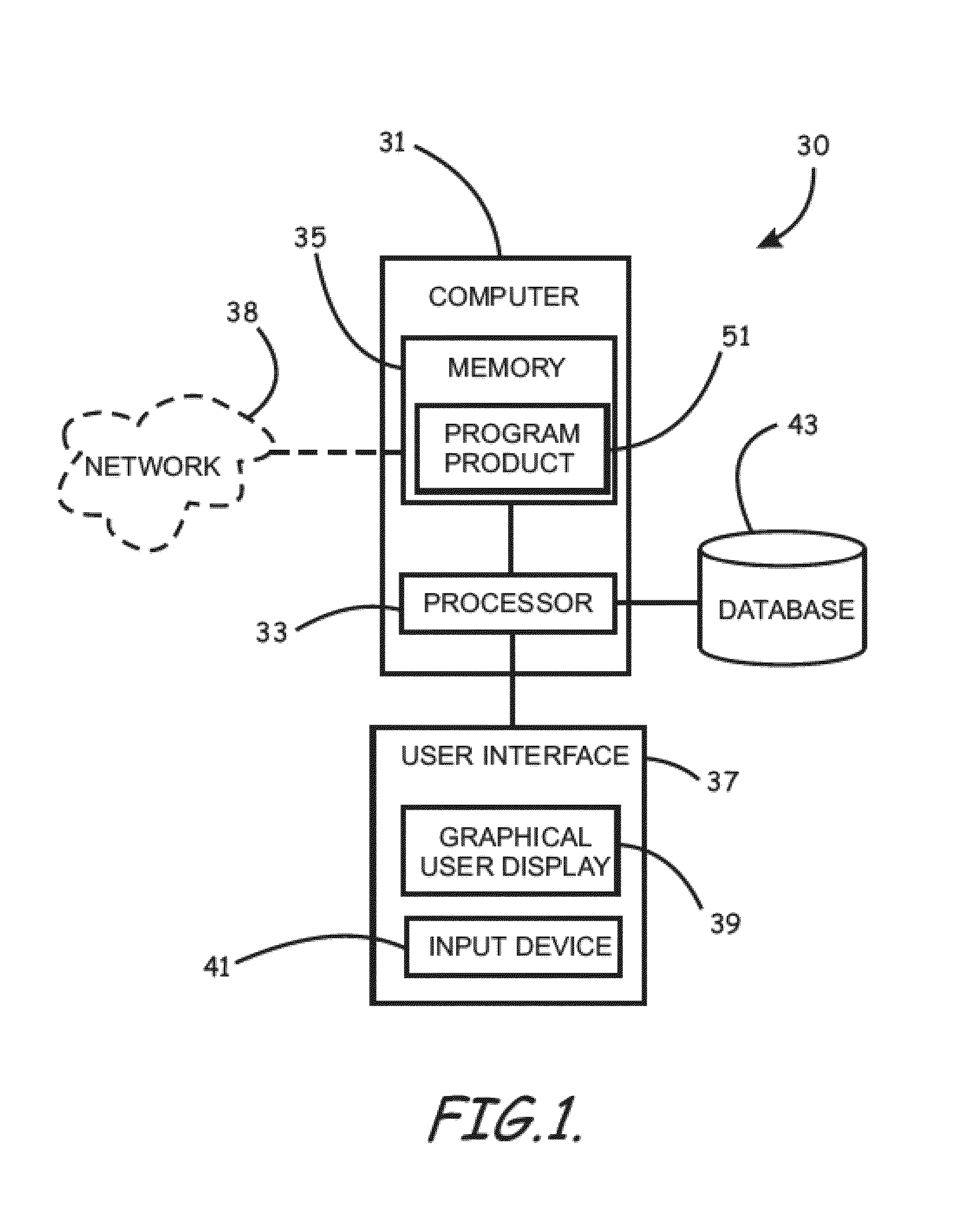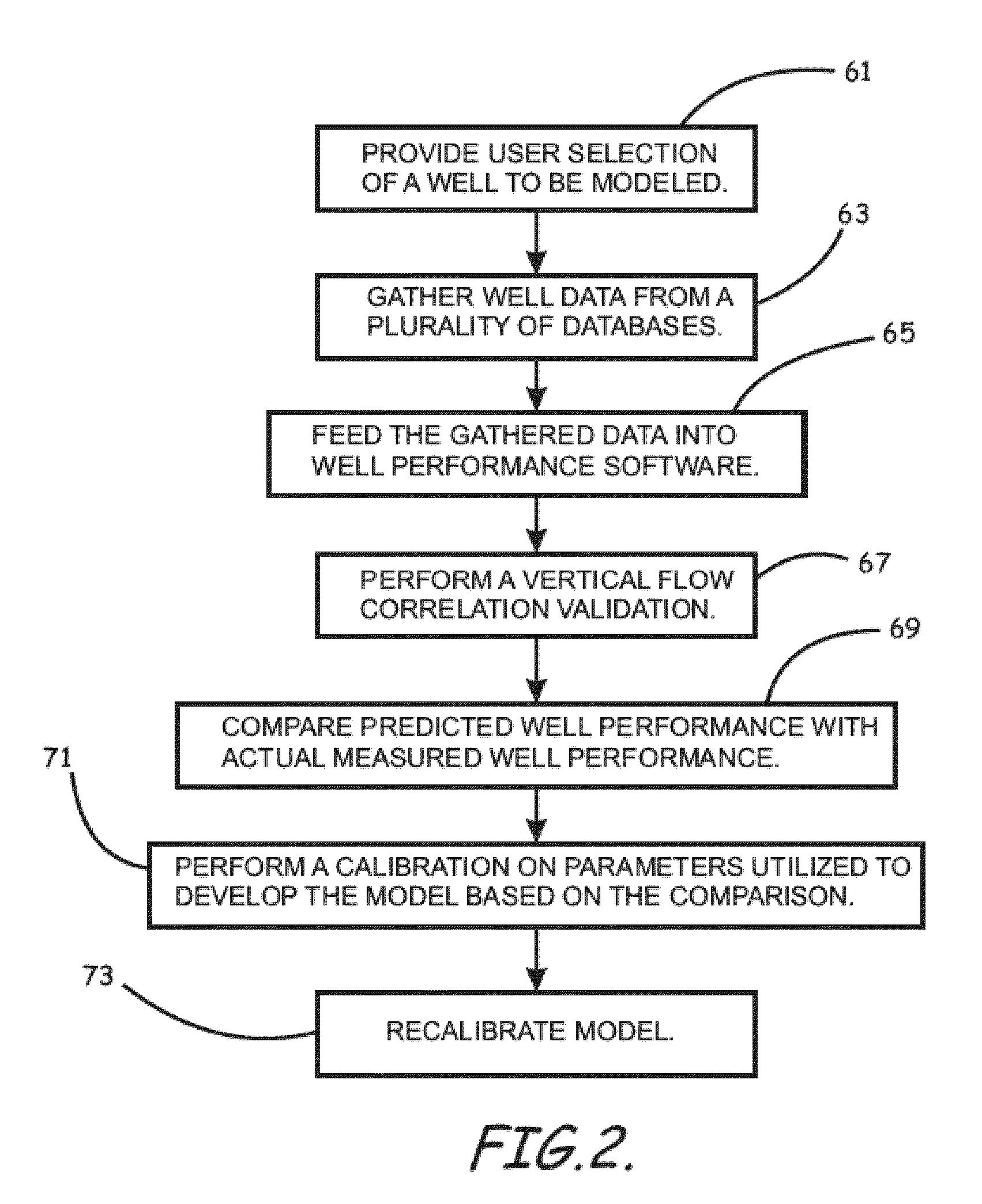Methods for performing a fully automated workflow for well performance model creation and calibration
a fully automated, well-performing technology, applied in the field of oil and gas recovery, can solve the problems of long process, human input errors, and many well-performing model users not following a standard method in feeding the correct data, so as to improve the quality of well-performing models
- Summary
- Abstract
- Description
- Claims
- Application Information
AI Technical Summary
Benefits of technology
Problems solved by technology
Method used
Image
Examples
case 1
[0089] The well has a “Valid” PI test not followed by a work-over.
[0090]Case 1.a: The model-predicted liquid rate is greater than the measured liquid rate.
[0091]In this case, according to the exemplary configuration, it is assumed the formation started developing skin or damage and the total PI can be decreased. The system / program product will start incrementally reducing the PI and recalculating the rate until the absolute error is within plus or minus 5%.
[0092]Case 1.b: The model-predicted liquid rate is less than the measured liquid rate.
[0093]In this case, according to the exemplary configuration, the system / program product will not increase the PI. Instead, the vertical flow performance modeling is considered questionable. As such, the system / program product will modify the flow correlation parameters to increase the predicted rate until the absolute error is within plus or minus 5%. Further according to the exemplary configuration, if the new correlation coefficients reaches 0...
case 2
[0094] The well does not have a Valid PI test or the latest test was followed by a work-over.
[0095]In this case, according to the exemplary configuration, the system / program product will focus on finding the PI value to match between the model and the field measurements.
[0096]It should be understood by one of ordinary skill in the art that absolute error tolerance values other than 5% can be utilized. However, significant benefits have been found by using such value. This tolerance value was set as it was determined that the value would cover the in-accuracy introduced by the flow correlation performance or by any of the input data such as PI, SBHP or PVT. Using a smaller tolerance has been found to result in forcing the model to match tightly by changing the inflow PI value or the outflow correlation factors, although this difference could be caused by any input data in the model itself. The 5% tolerance was, therefore, chosen as an acceptable value for engineering purposes.
[0097]M...
PUM
 Login to View More
Login to View More Abstract
Description
Claims
Application Information
 Login to View More
Login to View More - R&D
- Intellectual Property
- Life Sciences
- Materials
- Tech Scout
- Unparalleled Data Quality
- Higher Quality Content
- 60% Fewer Hallucinations
Browse by: Latest US Patents, China's latest patents, Technical Efficacy Thesaurus, Application Domain, Technology Topic, Popular Technical Reports.
© 2025 PatSnap. All rights reserved.Legal|Privacy policy|Modern Slavery Act Transparency Statement|Sitemap|About US| Contact US: help@patsnap.com



